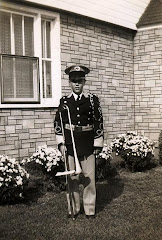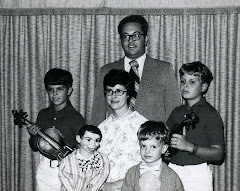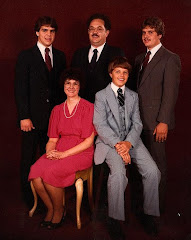This Advent hymn is one of my favorites especially when it is sung a cappella. The hymn's origins may be traced back to the late 16th century in a manuscript found in St. Alban's Carthusian monastery in Trier in the original German, "Es ist ein Ros entsprungen." The original stanzas (sources list at least 19 and as many as 23) focused on the events of Luke 1 and 2 and Matthew 2. There is some speculation about the origin of the image of the rose with some Catholic sources claiming the original focus was upon Mary. It has been suggested that at a later date Protestants took the hymn, altering its focus from Mary to Jesus, citing Isaiah 11:1, "And there shall come forth a rod out of the stem of Jesse, and a Branch shall grow out of his roots.". Some controversy arose as to the original German word in the first line of stanza one: Was it "Ros" (rose) or "Reis" (branch)? A passage from Isaiah 35:1 suggests a stronger biblical basis for the image: "The wilderness and the solitary place shall be glad for them; and the desert shall rejoice, and blossom as the rose." Theodore Baker (1851-1934) provided the most commonly sung translation of stanzas one and two in 1894. The third stanza is a slightly adapted version of a stanza written in German by Friedrich Layritz (1808-1859) and translated by Harried Reynolds Kraugh (1845-1925) in 1875. Layritz's final stanza expands the metaphor of the Rose image, adding fragrance. He then petitions the "Flower" to "dispel in glorious splendor the darkness everywhere." Of course, this is no ordinary flower and it represents Christ, the Light of the World. And while we don't know in what season Christ was actually born, we do know that He came to a world that was cold and dark because of sin. And He came to bring the glorious splendor of light and fragrance to people everywhere who would claim Him as Savior. And that is the message shared through this hymn over the centuries. Are you still living in the darkness and coldness of winter night or have you been transformed by what He has done for you? That is the true importance of Christmas.
(1) Lo, how a Rose e'er blooming from tender stem hath sprung!
Of Jesse's lineage coming, as men of old have sung.
It came, a floweret bright, amid the cold of winter,
When half spent was the night.
(2) Isaiah 'twas foretold it, the Rose I have in mind;
With Mary we behold it, the virgin mother kind.
To show God's love aright, she bore to men a Savior,
When half spent was the night.
(3) The shepherds heard the story proclaimed by angels bright,
How Christ, the Lord of glory was born on earth this night.
To Bethlehem they sped and in the manger found Him,
As angel heralds said.
(4) This Flower, whose fragrance tender with sweetness fills the air,
Dispels with glorious splendor the darkness everywhere;
True Man, yet very God, from sin and death He saves us,
And lightens every load.
(5) O Savior, Child of Mary, who felt our human woe,
O Savior, King of glory, who dost our weakness know;
Bring us at length we pray, to the bright courts of Heaven,
And to the endless day!
Listen to it here. LISTEN















No comments:
Post a Comment